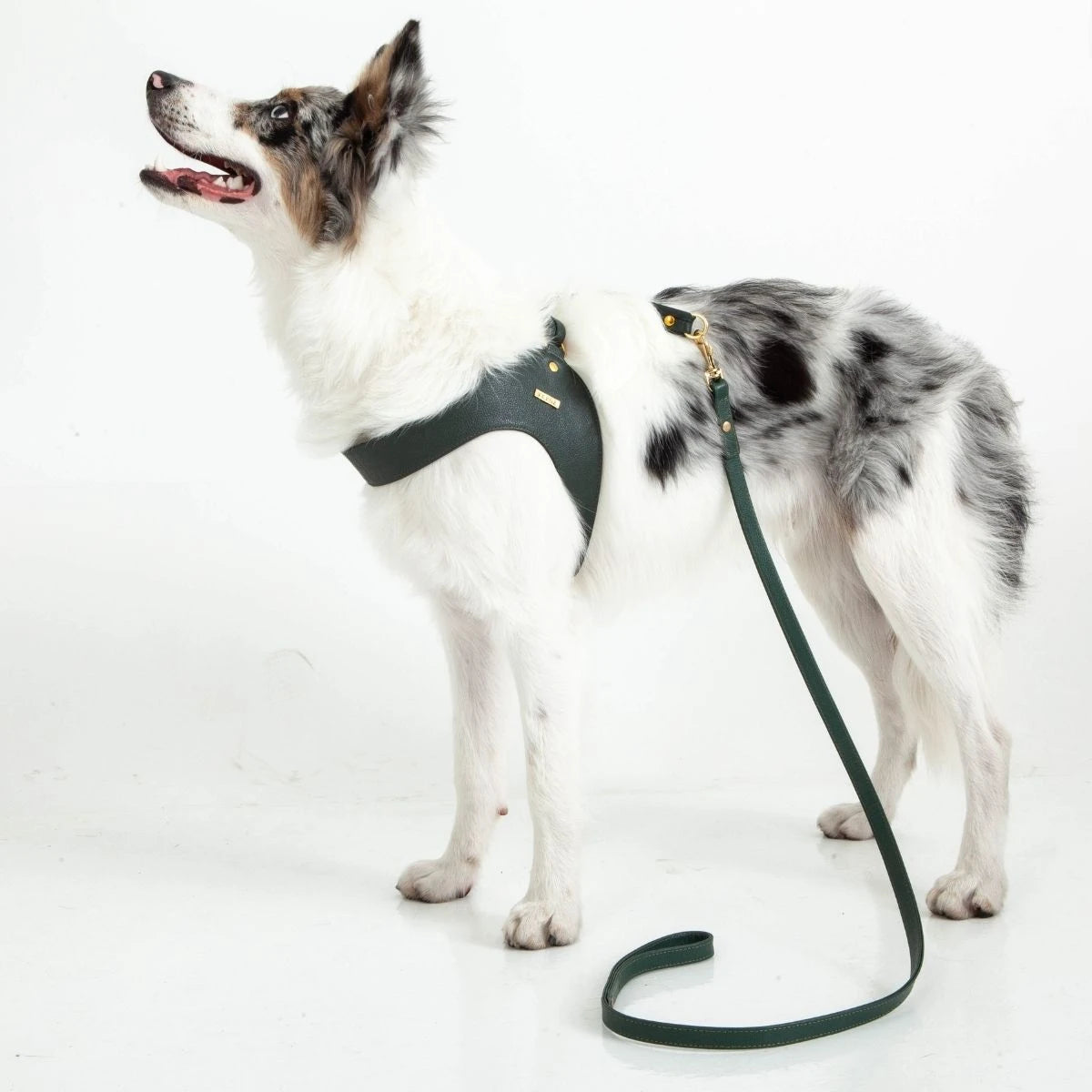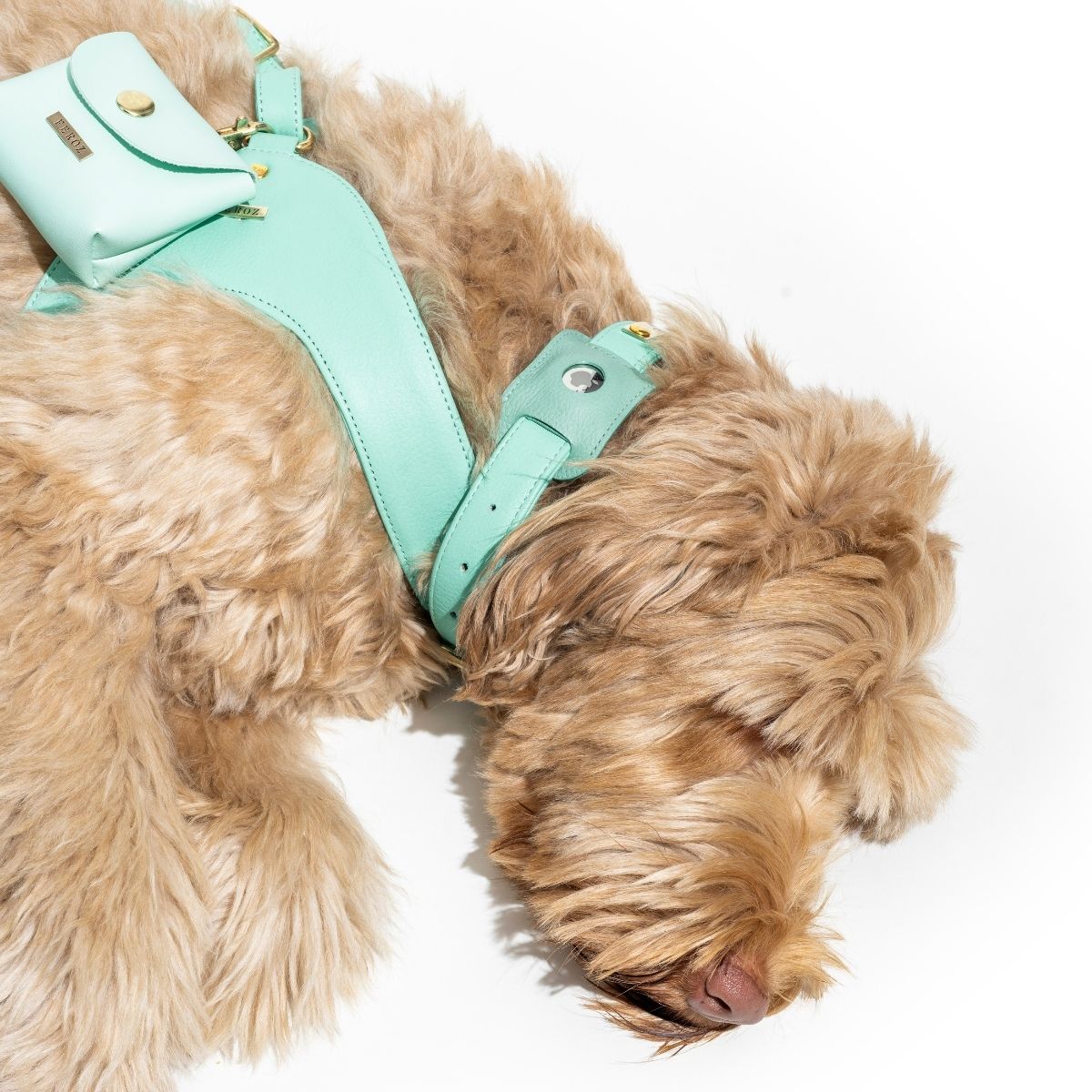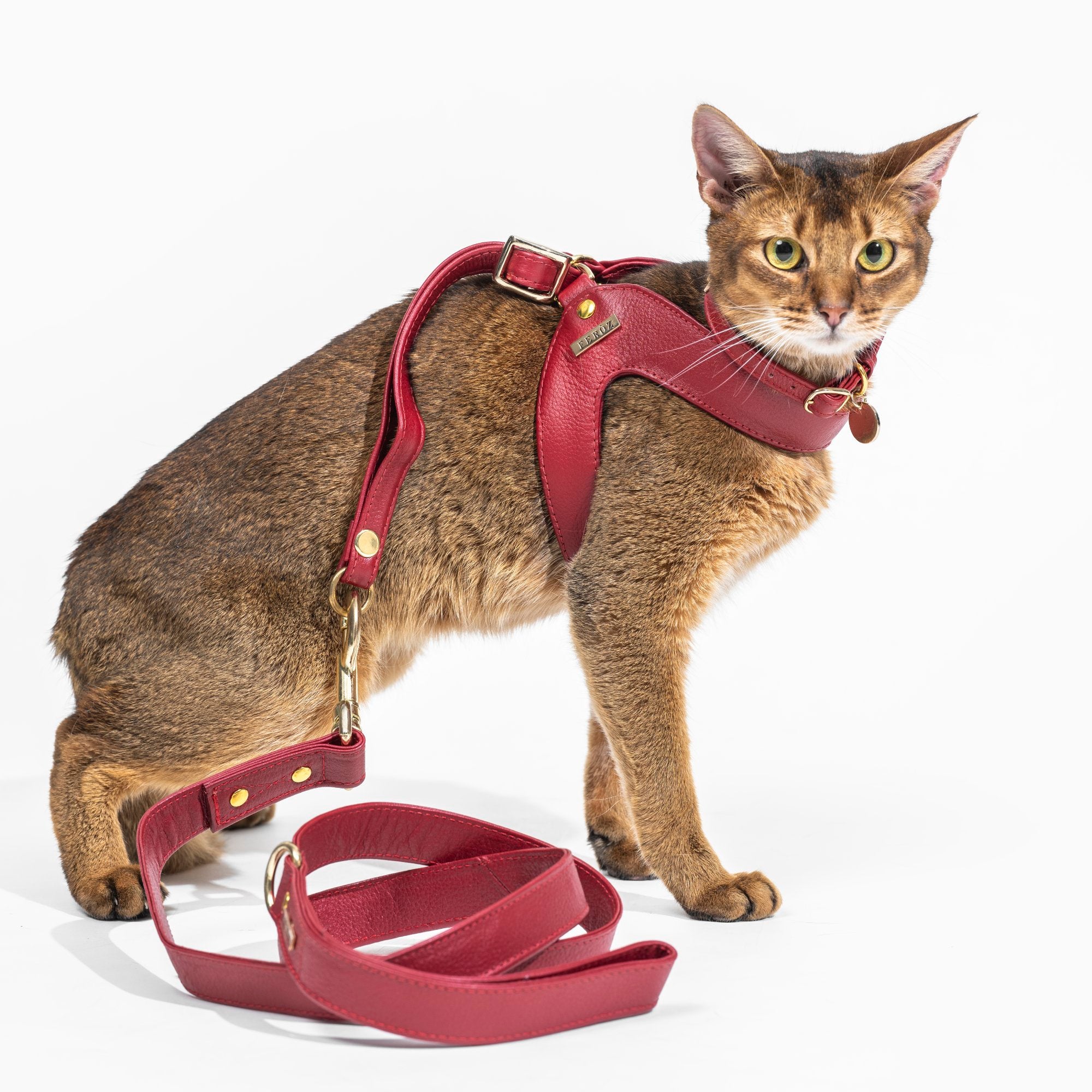On Vacation with your Pet.

Discover the tips you should keep in mind if you travel with your pets.
Por Marcela Moncaleano.
After almost two years of confinement, we have been returning to normality, step by step, and abiding by health measures. We have also been able to resume vacations either inside or outside the country with this.
As we all know, the most exciting thing about traveling is being able to do it with the best company, and what better company than our pets, these beings that, in times of pandemic and confinement, became the most therapeutic company that no doctor could prescribe. For this reason, it is essential to know how to travel with them, since the intention is that they enjoy the trip as much as we do. For this, we recommend you read the following recommendations, whether you travel by plane or by road, if you go to a place very hot, or on the contrary, you travel to cold areas.
TRAVELING BY PLANE
Before the trip:
To not have setbacks, you must confirm and plan everything in time. Traveling with pets by plane is not difficult, but it can take a few days to complete all the paperwork, so do not leave it for the last minute.
-
Confirm with the Official Veterinary Service of your destination (for international travel) what health requirements you have for entry. These can be a veterinary certificate or vaccination card with a special dose.
-
Evaluate if you meet the requirements requested at the destination and whether bringing your pet is feasible.
-
Approach the office of the Colombian Agricultural Institute (ICA) at the departure airport so that they do a complete inspection of your pet and issue you the Sanitary Inspection Certificate, with which you can travel.
This document must be requested within 24 hours before the flight and is required to take any international flight.
If the trip is within the country, this certificate is not mandatory. However, you can go to this office to have a final check before boarding if you have any questions about your pet's health.
The day of the trip:
- If your dog or cat will travel in the hold, make sure you have an appropriate crate for its size that meets airline requirements. For international travel, it is required that the grille be metallic.
- Get your pet used to being in the crate beforehand, and even try to sleep in it the night before so that it won't be a stressful factor during the trip.
- Give him a long walk before the flight to be tired and relaxed so that he may sleep a good part of the way.
- Ensure he receives his last meal at least 6 hours before the flight.
Veterinarians recommend avoiding sedatives and other tranquilizing medications for safety since it is best that your pet can be alert.
You can also travel with your pet in the cabin subject to the airline's requirements. These may vary from company to company.
Here are some examples:
- AVIANCA:
Your pet can travel with you in the cabin of the plane if it meets the following requirements:
It weighs 8 kilograms or less and has a maximum height of 20 centimeters.
The animal must remain in a waterproof fabric bag with holes during the flight. The measurements of the briefcase should be 40.6 centimeters long + 27.9 centimeters wide + 20.3 centimeters high.
Only one pet per person can fly.
As you travel, place your pet under the chair in front of you.
The transport of pets in the cabin is subject to space availability.
- DOCUMENTS:
Photocopy of the vaccination card
Sanitary inspection certificate
Documents required by the country of destination
https://www.avianca.com/co/es/antes-de-tu-viaje/necesidades-speciales/pets-a-bordo/
- VIVA AIR
This airline only allows pet travel on domestic flights in the cabin. For international flights, only support animals are allowed. Learn about all the requirements here:
Size of your pet: the maximum weight of the crate must be 10 kg with your pet inside, and the measurements must not exceed 55cmx35cmx25cm.
How to transport it: your pet must go throughout the flight in a cloth crate with a zipper.
Space for your pet: the crate should have enough space for your pet to stand up and move and turn around without difficulty.
Location: the crate with your pet must be located under the front seat of your seat on the plane.
Age: the minimum age of your pet must be eight weeks; if it is younger, it cannot travel with you on the plane.
https://www.vivaair.com/#/co/es/pets
- AIRLINES CUP
This airline only accepts dogs as service and emotional support animals. Service or emotional support dogs accompanying persons with disabilities or special needs are accepted onboard at no additional charge.
The dog must not go on the seats:
The dog must sit on the floor in front of your assigned seat and cannot take up space in the aisles. However, it can go on your lap if it's as small as an infant.
If the dog is too big to accommodate the feet, Copa Airlines will try to assign you to a seat with more space; if this is not possible, you can buy an extra seat to have additional space and accommodate the dog on the floor, in front or on the side of the seat, but not on the seat.
Assignment of seats in the emergency exit is prohibited.
The dog must remain with you at all times.
Transport on board the dog may be denied:
If he has a bad smell, bad behavior such as barking, growling, attacking other passengers, or cannot control his needs.
Suppose you do not comply with the required documentation of the country of origin and destination. Then, you will be responsible for the costs corresponding to reservation changes.
If you do not meet the above conditions.
It is not allowed to travel with a service or emotional support dog and a pet in the cabin. However, the pet can be transported through our Pet Cup service.
If you have a connection with another airline, you should contact them directly for their terms and conditions for transporting service and emotional support animals.
https://www.copaair.com/es/web/gs/service-animals
- TRAVELING BY ROAD
Seasickness is one of the main problems faced by traveling pets. To avoid this, it is recommended to feed them five hours in advance, especially if the trip is long, and ask the vet if it is convenient to give them any medication.
Although the trip is in a private car, it is best to go inside their cabins. This indication applies to cats in all cases since they tolerate changes very poorly by their nature, and a trip can become very stressful because of that. Still, their crate is familiar terrain, and they are comfortable. In the case of dogs, if there is no crate for space reasons, they must have their place inside the car.
In the market, they sell seats and seat belts for dogs that will prevent accidents in the event of a sudden movement or if you brake abruptly. Pita grilles are a good alternative, in the case of trucks, so they do not go to the seats in front.
But if you have a crate, which is always the best option, it must be secure on the floor, between the seats, to prevent it from moving.
It is also common for puppies to travel with their heads out the window. They love that. But it is not recommended that they do it for a long time, as they may suffer from hearing problems or pain.
If the trip is to very hot areas, some veterinarians recommend administering a product against ectoparasites to prevent tick infestation.
It is also very important to control the high temperatures on the pet, especially in the face of heat strokes. Therefore, it is essential to keep them hydrated and give them space to change their posture, stretch their legs, and walk a little.
In sun and beach destinations, pets should be prevented from walking on the first day because the change in ground temperature can be very sudden and cause wounds in the pads; they must be given time to adapt. It should also be avoided that they consume seawater; they, by instinct, due to thirst and heat, tend to seek this source of hydration. But seawater can cause stomach problems and vomiting.
If, on the other hand, they travel from warm cities to cities with a cold climate, they must be protected with sheets or blankets; they adapt more easily to cold than to heat, and in approximately 24 hours, they will be adapted.
- When you're at the beach:
Before organizing everything, it is better to check that the beach you plan to go to allows you to take your dog.
Once your departure destination has been confirmed, it is time to prepare the dog's backpack. Do not forget to bring: the papers of the animal, its water and drinking bowl, also some prize to reinforce its good behavior and, if you are going to be out all day, maybe you should also bring its food and the bowl.
Also, bring a toy: those that float are ideal for playing in the water. Finally, it is essential to remember the bags to collect your necessities: keeping everything clean so that other people and other dogs can enjoy the beach is everyone's responsibility.
Sun cream is recommended to protect them from the sun, and if you have delicate paws, a protector for pads is also recommended. In addition, unless you are sure that you can sit in a shaded area, an umbrella should not be missing from your beach equipment either: you may prefer to sunbathe, but your dog needs to be able to rest in the shade.
Once you get to the beach, choose a quiet place and worry about protecting your dog from the excessive sun: identify a shady place in case it needs it, and remember that you can use sunscreen, especially in areas with little hair and little hair. Pigmentation. It is also preferable to avoid exposure to the sun in the central hours of the day when irradiation is more intense.
Watch out! In the midday sun, the sand becomes too hot, and the dog can get painful burns on the pads and in the spaces between the toes. Pad protectors will reduce the risk of this happening. However, at this time of day, it is best for the dog to be resting under the umbrella or not directly on the beach.
Make sure he drinks water regularly: you can offer it to him, or you can leave his water bowl nearby. To keep it fresh, store the water in a place protected from the sun. Drinking will help keep him hydrated, but avoid giving him seawater because it can cause gastrointestinal problems. So watch out and don't let him drink it.
Do not lose sight of it at any time, especially if you will bathe. Playing on the beach, running, or chasing a ball are ideal summer activities: fun and refreshing, but not without dangers.
For the dog to bathe, you must choose an area with little depth and where there are no currents. You have to pay close attention, especially if there are jellyfish or sea urchins on the beach. Also, if the sea conditions are not safe (the danger flags will tell you), it is better to go down to the beach another day, especially if your dog is one that, as soon as they see the water, wants to go for a swim.
Whether you like to bathe, it is better to avoid the dog doing intense exercise in full sun and without rest. Heatstroke isn't just a risk for dogs locked up in cars in the middle of summer: dogs can get heatstroke even while on the beach. Brachycephalic dogs (i.e., flat dogs like bulldogs, boxers, or pugs) are at higher risk of heatstroke because they have narrower nostrils and a large palate that can block the airway.
Also, keep an eye out if you think there may be broken glass, cans, fish hooks, or other sharp objects hidden in the sand. Don't let the dog run wild in areas that could be dangerous.
If your dog likes to play with sand, be careful not to eat it: some dogs ingest large amounts of sand to the point that veterinary attention is needed. On the other hand, if he likes to play on the beach, dig holes, pay attention so that no one gets hurt, and cover the hole before returning home.
After these recommendations, we only hope that you and your pet can enjoy an exciting trip without being overshadowed by mishaps that can be prevented and avoided.






















